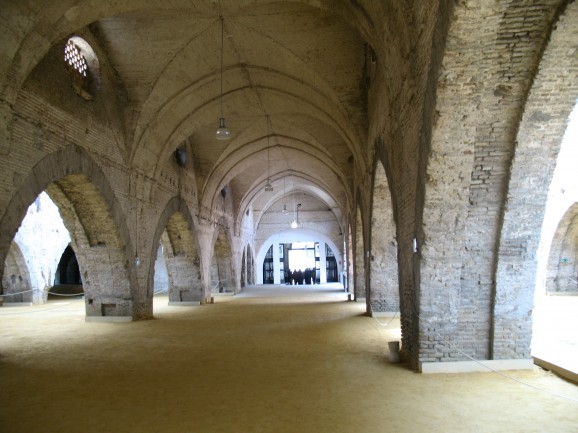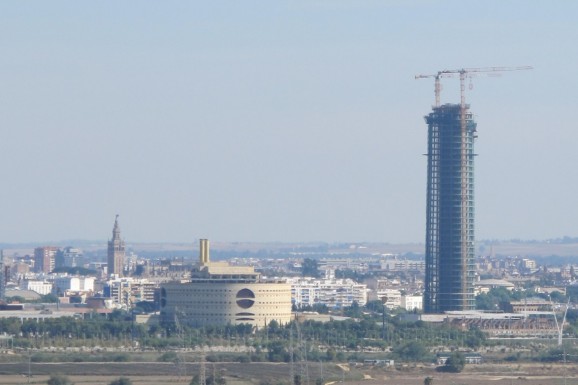 |
A bitter blow for the Atarazanas of Seville
Every city has its well-known sites - in the case of Seville, the Giralda, Cathedral, Alcazar, Plaza de España - and its less-visited monuments.
One of my favourites of these, here in Seville, is the Atarazanas. These are the Royal Shipyards - a vast space of brick arches and vaulted ceilings which dates from the 13th century, ranking them as one of the city's oldest structures, along with the Torre de Oro, and the aforementioned Alcazar and Giralda. Instrumental in Seville's period of huge wealth and power, it was here that the ships of the Royal Fleet were built, sailing off to the New World and returning laden with gold, silver and other precious spoils.
The fate of the Atarazanas had looked rosy - there was talk five years ago of a museum of Seville from the aspect of the river Guadalquivir, so crucial in its history; then a plan for a CaixaForum social, cultural and civic centre, run by La Caixa Fundacion (Caixabank) which already has six of these centres in Spain - see my previous Atarazanas post for more details.
In the meantime, there were plans to open the Atarazanas, which have been closed since 2010, to visitors again next year. The shipyards were seen as completing the group of buildings which comprise the UNESCO heritage site: the Cathedral and Giralda, the Archivo de las Indias, and the Alcazar, and providing a crucial link between these world-famous monuments and the nearby river.
 |
On Tuesday, La Caixa Fundacion announced that it will no longer be using the Atarazanas for its new cultural centre; instead this will be located in Seville's most controversial new building-in-process: the Torre Pelli. Responsibility for the historic monument was handed back from La Caixa to the Junta.
This means that the Atarazanas' future - refurbishment, ongoing conservation and a new lease of life as a focal point for the city - has been taken away. The Junta has no financial means to maintain such a large structure, so who know what will happen to it now? Its fate is uncertain.
The Mayor, Juan Ignacio Zoido, is blaming the Junta's Consejo de Cultura (the Atarazanas have been handed back to the Junta de Andalucia by Fundacion La Caixa), in an open letter. The architect of the project is blaming the Ayuntamiento for not granting a works licence, suddenly demanded in September (he claims ex-mayor Monteseirin had stated it wasn't neccessary, and that current mayor Zoido told him personally on many occasions that there wouldn't be a problem with the licence.).
This delay in the process is being cited by Fundacion La Caixa as the reason for its change of heart. However sources at the Fundacion told me they're fairly sure that the reason is economical: Caixabank has just bought Cajasol, the controversial 30-million-euro tower's owner, so why would it want to invest 25 million euros in restoring another building?
But from an aesthetic and historical point of view, there is no logical (or sane) comparison, for the location of a new cultural centre in a city like Seville, between a huge, modern tower block outside the city centre, and a medieval architectural jewel right in its heart.
Next Saturday, 24 November, the Fundacion Museo Atarazanas is holding a meeting otuside the building, to attract public support to their cause. I, for one, will be there.